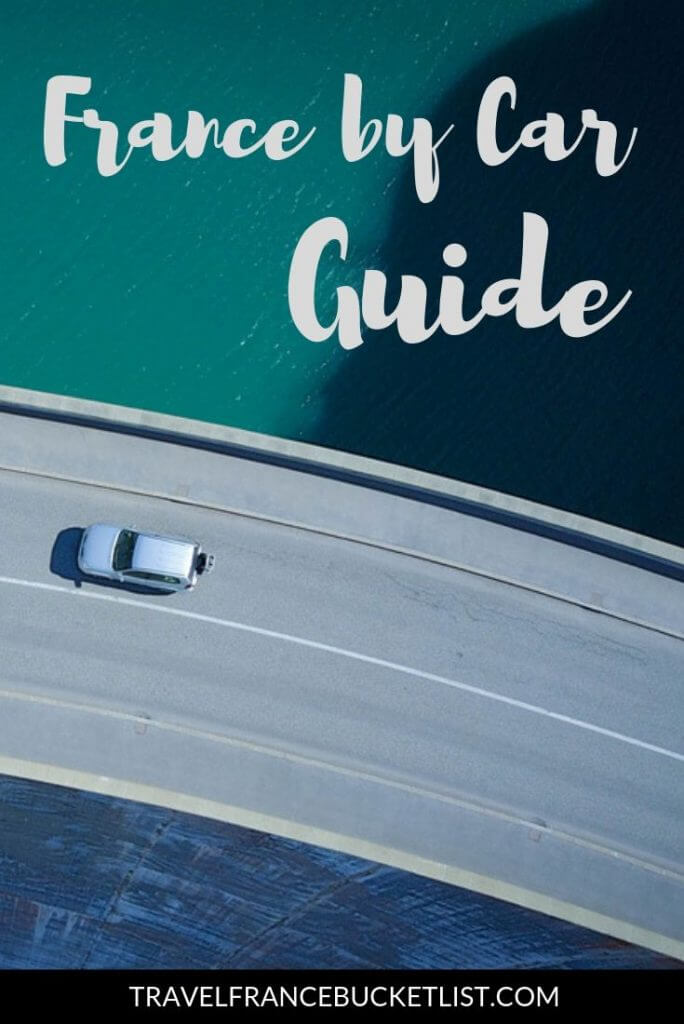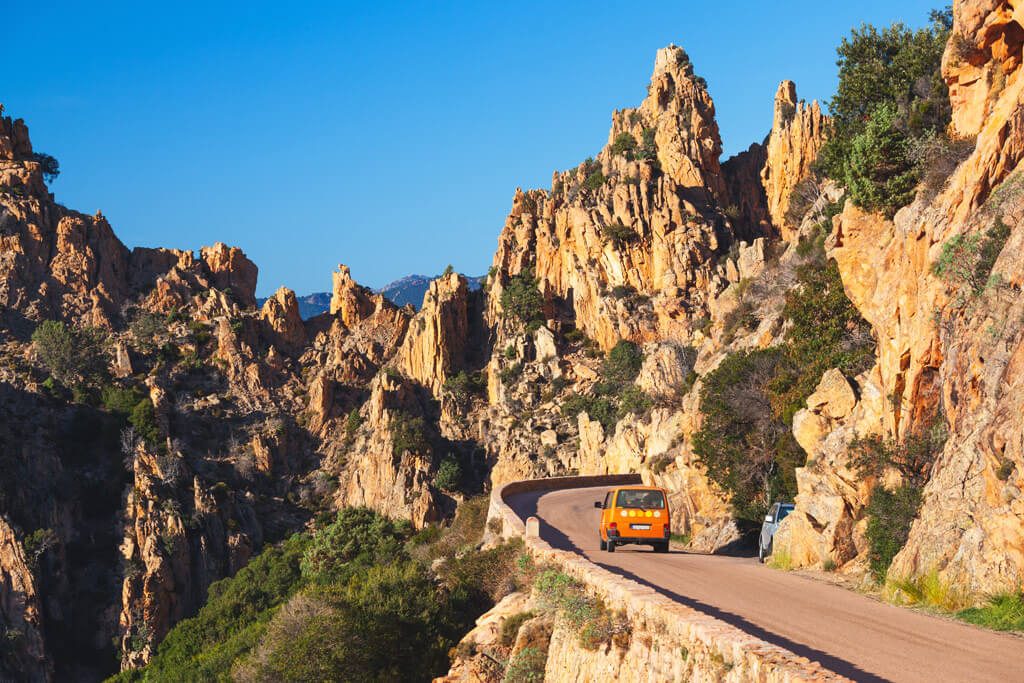Article written by Elisa - Travel Writer & Local in France
This article may contain compensated links. Please read disclaimer for more info.
Driving in France as a Tourist
So you are planning your once-in-a-lifetime trip to France and are wondering how to get around efficiently, all while seeing the beautiful country at your own pace. Naturally, touring France by car is a fantastic option for transportation in France.
In this guide to driving in France as a tourist, you will learn how to drive in France, and we will cover everything you’ll need to know, including driving requirements, common rules and regulations, and more. This guide to France by car also comes with a driving in France checklist, so we are sure you don’t forget anything!
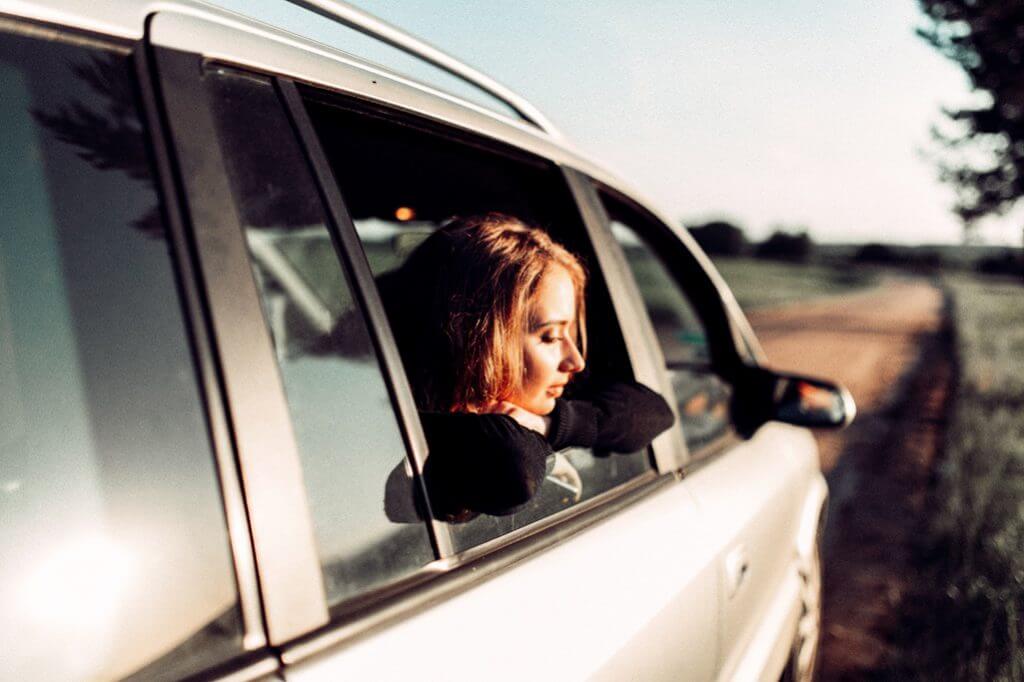
Driving In France Guide – Table of Contents:
- Driving in France requirements
- Renting a car in France
- Driving in France checklist
- Roads in France
- Toll roads in France (Péages)
- Villages Etapes
- Driving in Paris
- French Crit Air (pollution stickers for France)
- French road signs and French traffic signs
- Rules of the Road in France
- Car accidents in France
1. Driving in France Requirements
If you plan on traveling to France by car, you need to be aware that there are certain requirements before getting behind the wheel. The following are the documents that you must have with you at all times and other requirements for legally driving in France.
- Valid Driver’s License
- Current registration and proof of purchase (if driving your own vehicle): When driving your own car, a valid driver’s license, as well as registration or proof of ownership, is required to be with you at all times in the car.
- Valid Passport: a passport is required for both the driver as well as any other people in the car.
- Valid Car Insurance: For car rentals in France, double-check your contract and agreement that this has been included in the paperwork or is in the car and is up to date.
- All drivers must be 18 years of age in order to drive in France. Even student drivers with a permit and with an adult are not allowed.
- Towing: If you intend on towing anything behind your primary vehicle when traveling to France by car, ensure that you have all the proper licensing documentation from the country of origin. This includes a sticker on the license plate from your country that matches the plate on your car.
2. Renting a Car in France
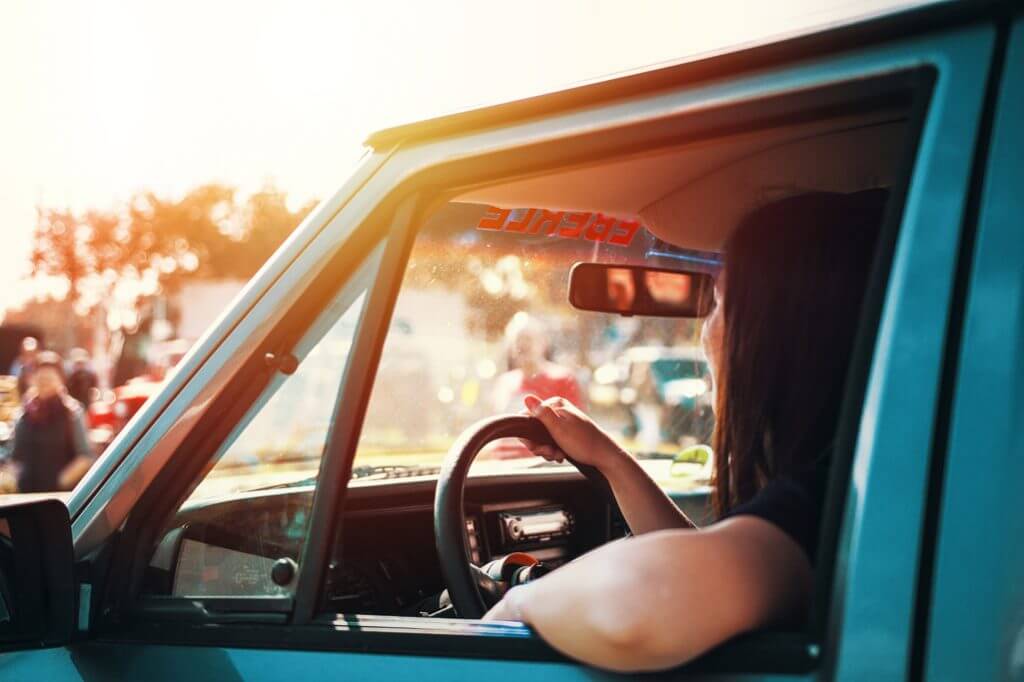
Car hire in France is a fantastic choice to tour France on your own. You can book through sites such as DiscoverCars.com. This site is great because it takes all of the major rental companies, such as Hertz, Avis, and more, and compares prices for you. This helps to ensure that you get a great price without all the time and work.
We have written a dedicated article about renting a car in France, with all the information and our best tips for car hire in France.
So you’ve got wheels; now what?
3. Driving in France Checklist
What are the driving requirements in France? What are the essentials for a road trip in France? If you are heading out on a road trip through France, there are some things you should remember to check and take. This driving in France checklist will see you right.
This packing list for a road trip, instead, includes personal items to keep you comfortable and general travel items.
4. Roads in France
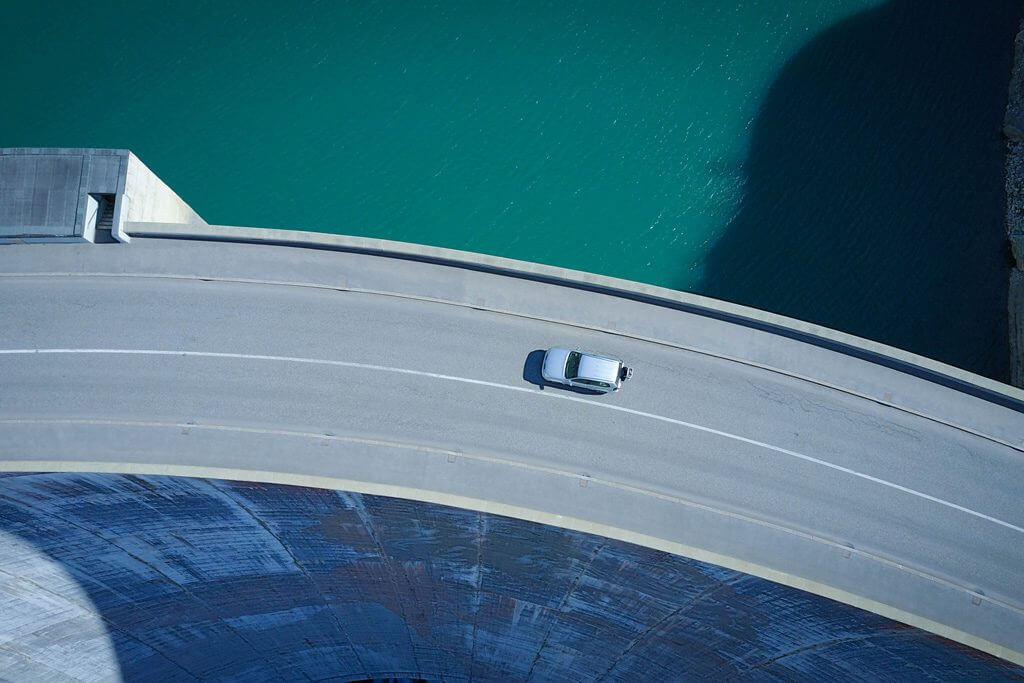
Knowing the different kinds of roads in France can make a huge difference in the comfort, ease, and stress of driving.
Roads Labeled:
» A: These are ‘Autoroutes.’ Other countries call them motorways or interstates. An example of this in France is the A8.
» N: The ‘N’ stands for ‘National Strategic Truck Routes.’ These roads are good alternatives to toll roads and Autoroutes, but you can expect them to take longer than the motorways.
» D: A ‘D’ road is a county (Departmental) road. ‘D’ roads can be anything from tiny little roads to busy streets that once were national routes. If the latter is the case, they will have received new street numbers, so a current map is vital to understanding where you are driving.
» Road Numbers: It can sometimes be confusing if you see multiple numbers on a road sign. French road numbers will be white on a red background. European road numbers are white on a green background. Oftentimes, both will be listed, especially if the road leads from France to another European destination.
» Péage: This means Toll Road Ahead
» Bis: Oftentimes, there will be alternative routes posted with the word ‘Bis’ and a destination. For example, you may see ‘Bis Lyon.’ This is the equivalent of the British ‘Holiday Route,’ which is simply a secondary or alternative option to the main motorway. These will often have less traffic or are to avoid traffic jams.
5. Toll Roads in France (Péages)
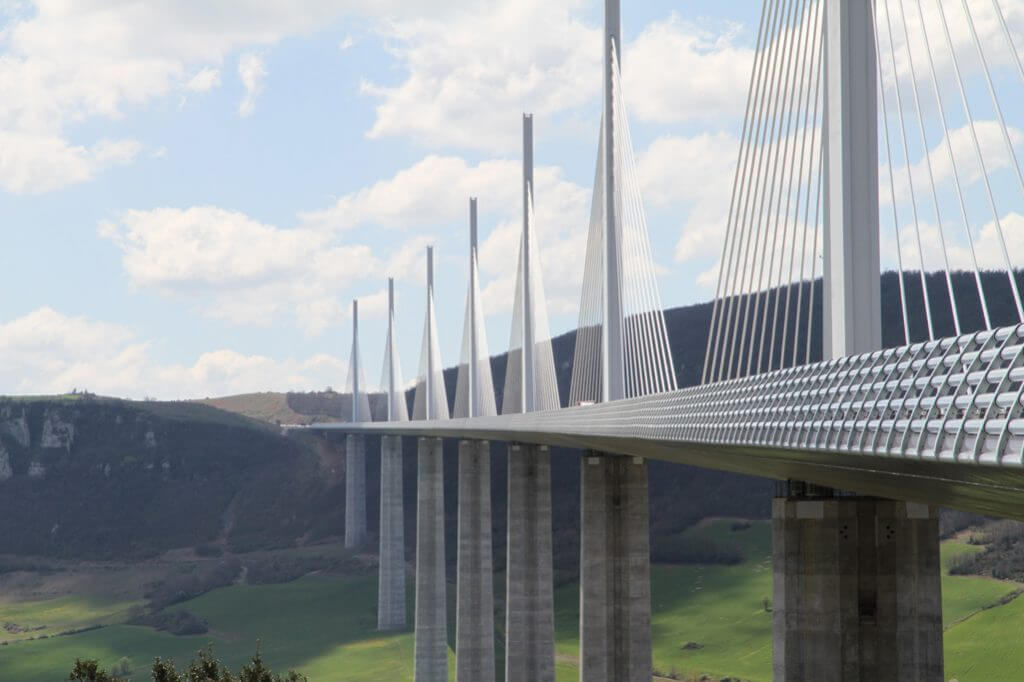
When driving in France, while there is no vignette required, you can expect a toll on almost all Autoroutes. The signs (péages) are well marked, and you will know when you approach a new toll.
You will typically come to a toll plaza that has machines in each lane where you will take a ticket stating where your toll starts.
You pay for the toll when you exit the motorway to either an attendant or another automatic machine that takes credit and debit cards.
In addition to the toll roads, you may also encounter tunnels or bridges that also require a toll. For most of these, you will pay before entering.
For further information regarding French toll roads, you can learn more here.
TIP: this really useful tool estimates the costs of the fuel and tolls for traveling from A to B in France (you can change the price/liter).
6. Villages Etapes
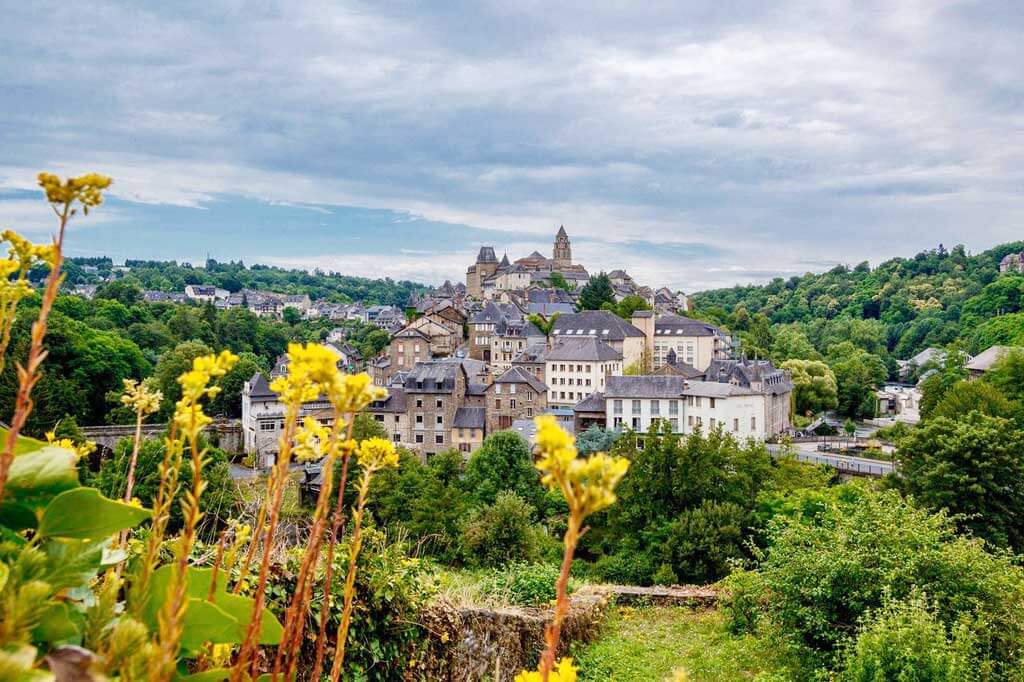
Village Etape is a quality label in France that could be translated as “Stopover Villages.” The concept is very simple: located less than 5 minutes from a national road or a free motorway, the Villages Etapes offer all the shops and services necessary for your breaks on the road in a much more picturesque atmosphere.
Read more about the Villages Etape – where they are and what they offer –, and make your French road trips more enjoyable by planning your breaks around them.
7. Driving in Paris

While driving to France is great for exploring the countryside, it is recommended not to bring a car into the French capital.
Paris has a great public transportation infrastructure, making car hire pointless. For example, the traffic in Paris can be overwhelming for tourist drivers. The highway that encircles Paris is the la Périphérique, and there is almost no way to avoid it when driving into the city. It becomes quite hectic when you need to exit (on the far right out of 4 lanes) but simultaneously needing to head the car merging (also on your right!), all while keeping a careful eye on the 70 km/hr speed limit!
Once IN the city, driving is still quite stressful, and then finding parking in the city is also extremely difficult. Even if you are lucky to find street parking available, you have to pay to use most of them.
Therefore, take advantage of the great public transportation in Paris and ditch the car. If driving your own vehicle, there are many easy and affordable parks and rides outside of the city – for example, Disneyland Paris. Simply park at the lot, pay the fee, and take public transportation into the city.
If you need a rental car after your time in Paris, there are plenty of agencies with locations on the outskirts of the city (to avoid city driving), or rent a car at the airport (also on the outskirts). We recommend doing this at the end of your time in Paris, just before heading off to your other destinations.
TIP: Book ahead of time with DiscoverCars.com to get the best prices.
Gas/fuel Stations in Paris
While there are several gas stations along the circular ring road (périphérique) when entering Paris, they can be harder to find in the actual city. If you are planning to drive to France, it is also best to fuel up outside of Paris, as prices tend to be cheaper away from the city.
You can use a Gas Finder App or even Google Maps to help figure out the best routing option for fueling up.
Watching Out for Cyclists and Pedestrians
When driving in Paris or anywhere in France, remember to give pedestrians the right of way and to always be on the lookout in busy locations.
Cyclists don’t always follow traffic laws. You may find them cruising in between lanes and dodging in and out of cars. People walking sometimes run out into the street, despite the signs telling them to wait, so just be vigilant and patient.
8. French Crit Air (pollution stickers for France)
Many EU countries have emission laws in regard to driving, and France is no exception. Since 2016 vehicular access to certain cities /areas has been governed by the requirement to display a valid French Crit Air – Air Quality Certificate clearly visible on your windshield.
These areas have been designated “low emission zones” and can be permanent (ZCR or “Zone à Circulation Restreinte”) or temporary (ZPA or “Zone de la Protection de l’Air”).
The main cities /areas where this applies currently are Paris, Grand Paris, Rouen, Montpelier, Grand Reims, Lyon, Saint-Etienne, Marseille, Strasbourg, Toulouse, and Nice.
Basically, diesel vehicles made before 2006 are not allowed in these areas at all. Other vehicles should display the appropriate certificate (which you can apply for here).
The French Crit Air sticker is mandatory in low-emissions zones for mobility (LEZ-m) and during periods when the traffic is differentiated. Signs will be posted in the restricted areas and will include the time of the ban.
You can easily get the French Crit Air sticker online a few days before driving in France. For vehicles caught without the proper sticker, expect a fine.
Some rental car agencies will help you obtain these, others you will need to order one ahead of time yourself. Speak to your car rental company to know if you will need to get one on your own.
For more information as well as to obtain a sticker, click here.
9. Rules for Driving in France
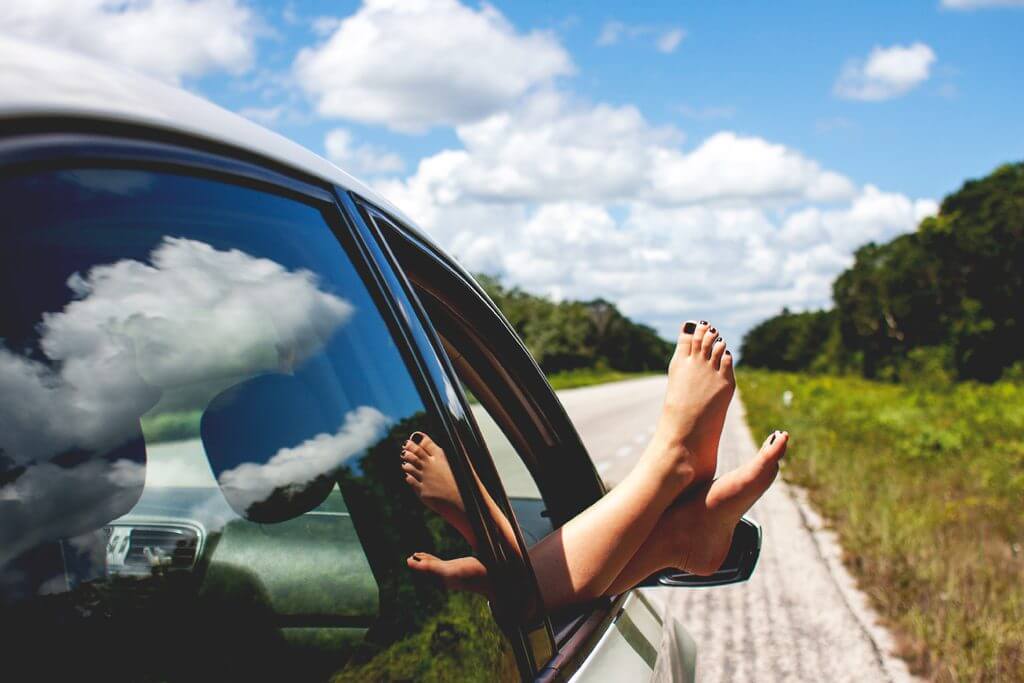
French Traffic Signs
When driving in a new country, you must familiarize yourself with the local roadway rules and signs. While many of the French traffic signs can be easy enough to figure out, such as the “warning” signs, others are not as intuitive, like the signs stating who has priority when and where or those with French words on them (if you don’t speak French).
Luckily, most French traffic signs are the same as you will find throughout the rest of the EU, so if you are driving elsewhere, you may not need to learn too many extras.
TIP: Here is a complete visual list of driving in France road signs to learn before you start driving.
10. Rules of the Road in France
Rules for driving in France are pretty common and typical among other EU countries’ driving regulations. However, make sure you’ve read through the following so you understand if you need to take further actions to ensure you are within the law.
» Seatbelts: ALL passengers are legally required to be belted. In fact, it is the driver who can be ticketed and fined for passengers not wearing seat belts.
» Infants and Car Seats: All babies and infants are required to be in proper car seats. If under the age of one, it must be rear-facing.
» Children Under 13: Please make sure that all children under 13 either have the correct car seats or booster seats for their age and height or belt adjusters. Also, children under 13 are not allowed to sit in the front passenger seat.
» Drinking: France is extremely strict about drinking and driving. The blood-alcohol level can only be below 0.02%, which for many people is even just one drink! Serious penalties, such as extremely high fines, license revoked, and even jail, are all things you don’t want to have to deal with on your trip to France.
» Driving With Headlights On: While it is only compulsory for motorcycles to have headlights on at all times while driving, it is strongly encouraged for all drivers to have low beams on while driving both during the day and at night, especially when on country roads.
Keeping high beams on when approaching oncoming traffic can also result in tickets and/or fines.
» Right of Way To the Right: Like most European countries, whoever is approaching on the right has the right of way unless otherwise noted. When in doubt, give the right of way! For example, when driving on a neighborhood road, any roads to the right of you have the right of way over you. While there are certain street signs to indicate who has the right of way (see the above section and recommended links), you may also see a sign stating “Vous n’avez pas la priorité,“ which means you do not have the priority.
This is a perfect example of making sure you have reviewed and understood all of the above road signs so that you follow the laws of the local country.
» Driving in Kilometers: For most countries, this is not an issue, but if you are coming from a country that uses miles instead of kilometers, just make a mental note and start looking at conversions to familiarize yourself with the difference. For example, 50 kilometers/hr is 31 miles/ hr, which is what you will find on many highways. Most Autoroutes have a speed limit of 130 km/hr, which is roughly 80 mph.
Speed limits can change depending on current driving conditions, so it is essential to be paying attention to the signs.
» French Roundabout Rules: Roundabouts are found all over Europe, but for foreigners, they can be confusing and scary. Just remember that you must head to the traffic already in the roundabout before entering. Use your signal only to indicate when exiting.
» Driving in France: Left or right? Many people ask how to drive in France (which way), and the answer is that they drive on the right, like most mainland EU countries. This also means that when entering a roundabout, the traffic will go clockwise.
11. Car Accidents in France
Nobody likes to envision a car accident or breaking down while on their trip. However, it is still important to know exactly what to do if something should happen.
- Put on your safety vest from your driving kit.
- Set up the red warning triangle (also in your driving kit). Give enough distance for oncoming cars to become aware that a car is on the side of the road or there is an oncoming accident.
- If in an emergency or car accident, dial 15 on French lines or 112 on international phones
- ‘Constat Amiable’ (Friendly Declaration): If you were in an accident, you’ll fill out the ‘Constat Amiable’ form. At this time, it is advisable to call your insurance company to ensure that all information needed from the scene is obtained. No matter the accident, make sure you have all names, vehicle registration numbers, insurance information, and contact information.
- For any injuries with any party involved, everyone must remain on the scene until the police arrive.
Before starting your French road trip, we recommend downloading the free app SOS autoroute. Thanks to geolocalisation, SOS autoroute will connect you quickly to the nearest security station to report an emergency or an unusual event.
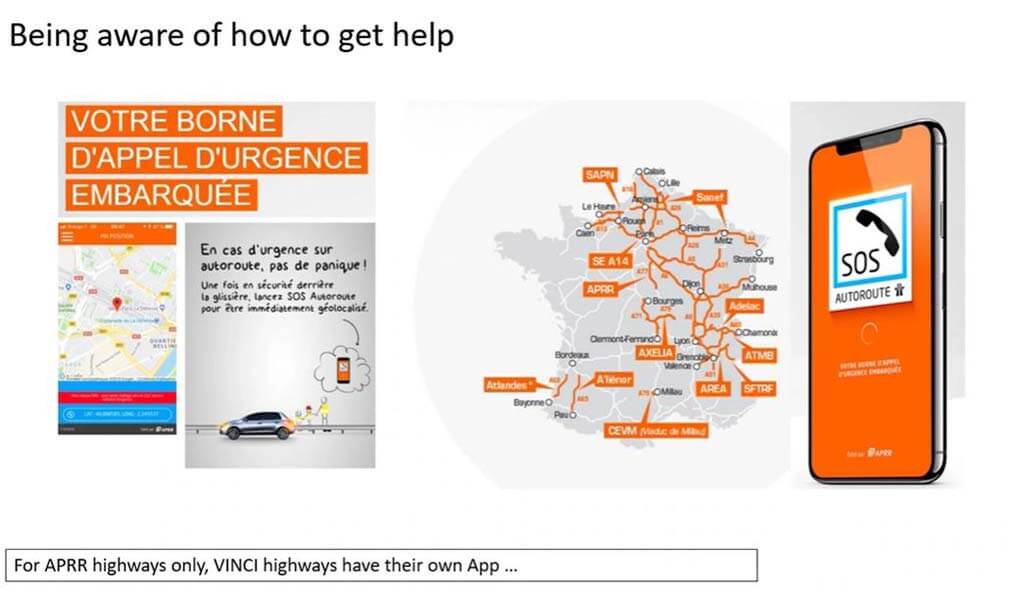
We hope that this guide to driving in France as a tourist was useful to you. By now, we are sure you know the best tips for driving in France, and you are ready for your first trip to France by car. Bon voyage!
Click here for other Road Trips
Pin it now & read it later
